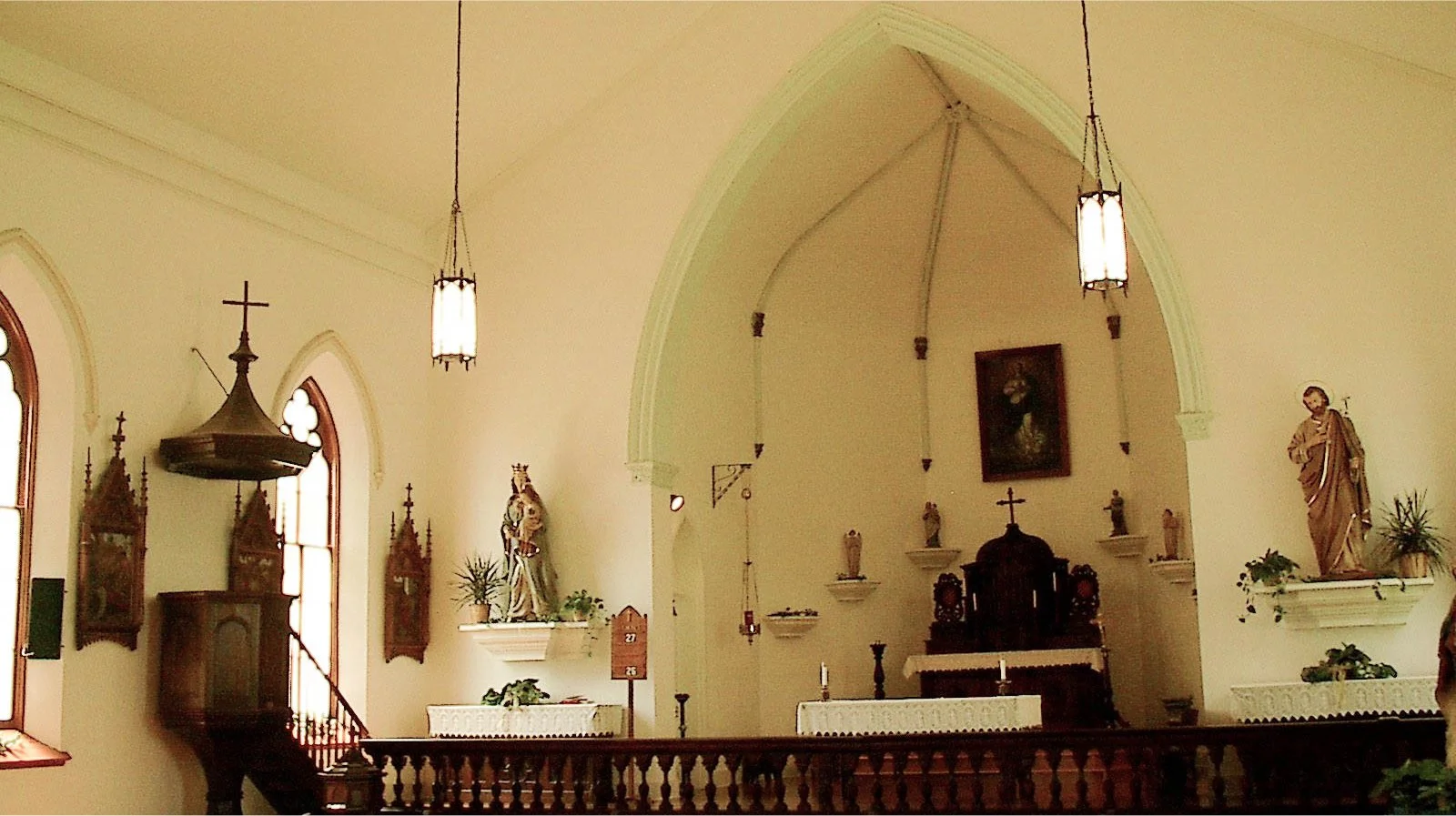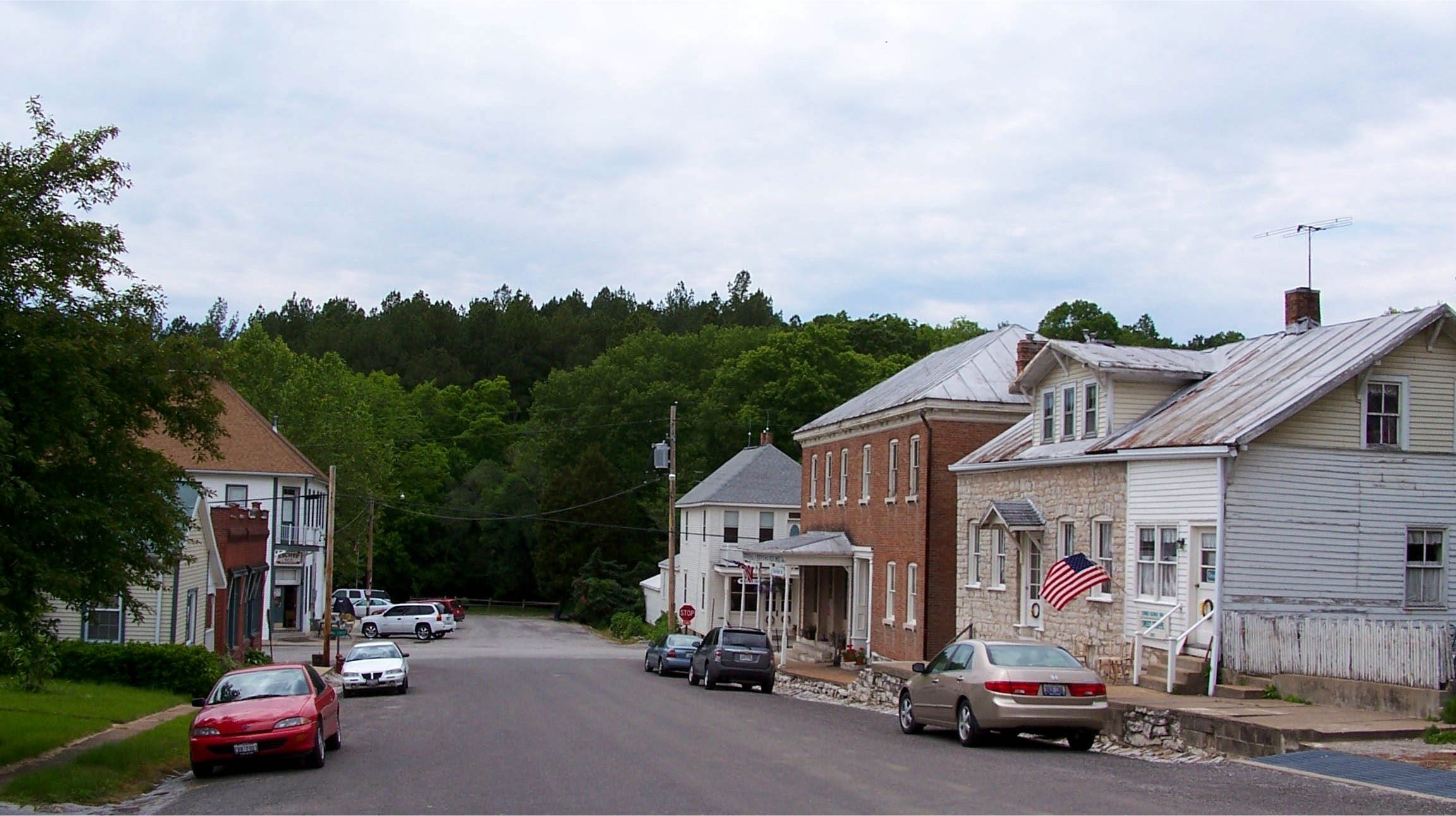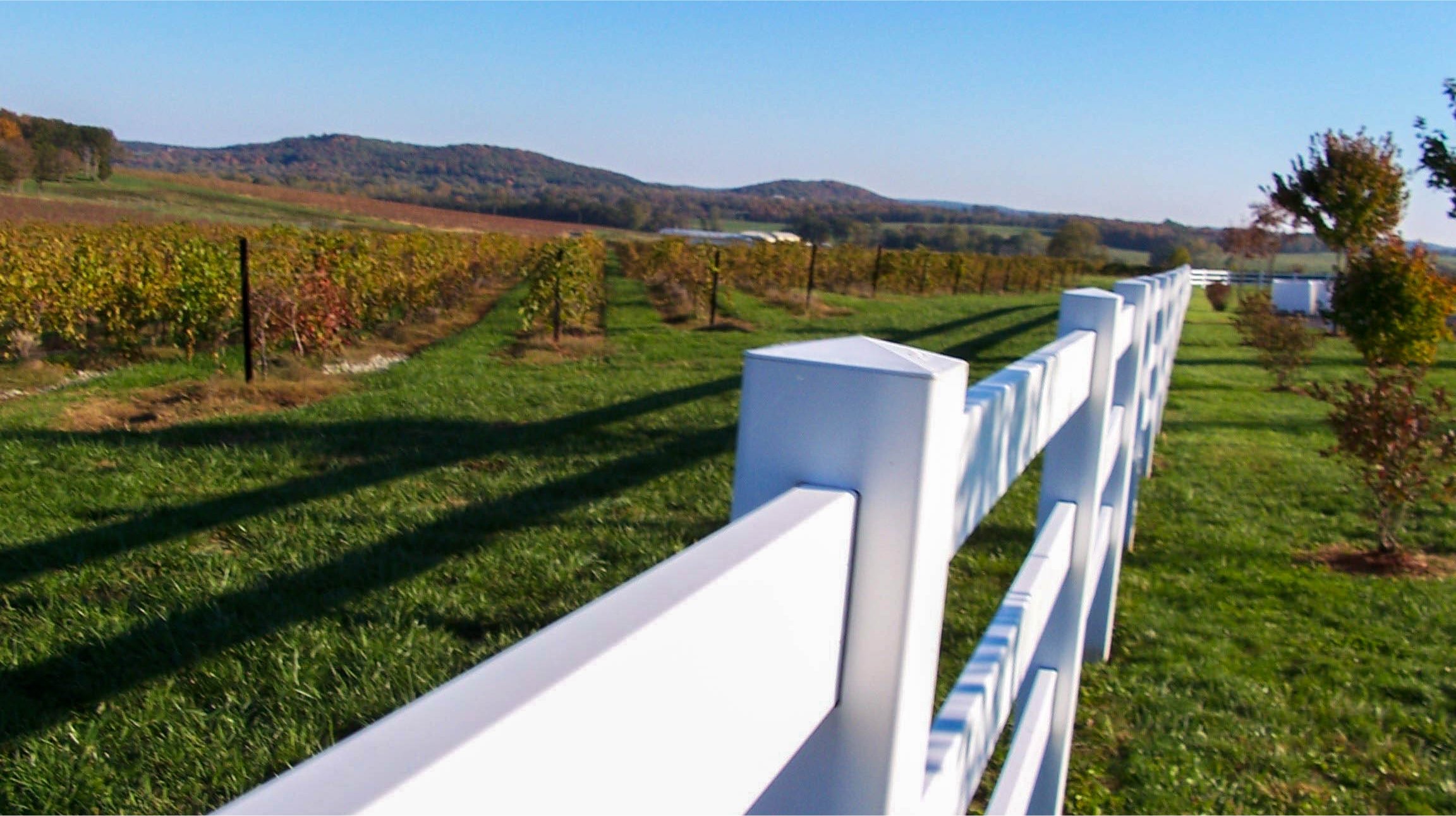208 1st Street
Kaskaskia, Illinois
618-366-2633
Marquette established a mission with the Kaskaskia Indians in 1675 near Starved Rock, Illinois. By 1700 crowded conditions and tribal unrest pushed the Kaskaskia tribe and its mission down the Mississippi. After stops at Peoria and near River des Peres, the tribe with its missionary, Fr. Marest, settled on a five mile wide peninsula about six miles north of the confluence of the Mississippi and Kaskaskia. On April 13, 1703, Marest gave a Mass giving thanks. The peninsula had been in use by trappers since 1686 and with the arrival of the mission in 1703 the village of Kaskaskia was established. By 1718 the Village of Kaskaskia was laid out with definite boundaries, adjoining Commons and Common Fields and was incorporated in 1725. The village prospered as both an agricultural and trading community exporting their products down river to New Orleans.
The Mission of the Immaculate Conception also prospered and built its first stone church in 1714 and in 1720 became an established parish. In 1741 King Louis XV of France sent a bronze bell with the inscription: POUR LEGLISE DES ILLINOIS P ARLES SOINS DUROI DOUTRE LEA (For the Church of the Illinois, by gift of the King across the water.) The bell was rung on July 4, 1778, when George Rogers Clark captured Kaskaskia for the American colonies and the bell is now commonly known as "The Liberty Bell of the West."
The Mission built a series of new churches as the community grew. In 1843 a brick church was completed in the squared-off French style with the bell tower over the center entrance. The flood of 1881 created what is now called Kaskaskia Island and almost obliterated most of the village of Kaskaskia. The flood of 1893 convinced the parishioners to move the church along with the village to Kaskaskia Island. In 1894 the church was moved and rebuilt brick-by-brick in its present location with the bell spire was built over the side entrance. In 1962 the church and many old relics were restored - with the original beams and bricks still a part of the church. The flood of 1973 destroyed the wood floor and severely damaged the church - the floodwaters reaching almost to the Stations of the Cross hanging on the wall.
The interior of the church has many unique and historic features and artifacts. The altar dates back to the early mission days of the parish and was built around 1736. Hand carved out of native black walnut and cottonwood, it was built with wooden pegs rather than the more expensive nails. The crown over the altar is made of a single tree trunk. The bottom section of the altar was restored after the 1881 flood with material of the time and was reinforced in 1999. A brass sanctuary lamp hangs by the altar and dates along with the altar to the mission times of the church. The pulpit was built in 1860 out of walnut in 1860 and restored after the flood of 1993. The altar stone is a stone specially blessed and is imbedded with a relic of a martyr of early Christian times. Local tradition says that Father Marquette himself brought this stone to Kaskaskia. The stone was carried to the New World by sailing ship from France and then to Kaskaskia by canoe.
On the church walls are 14 lithographs of the Stations of the Cross. It is believed they were painted in Germany and date back to the 1800s. They are framed in butternut mahogany hand carved at Kaskaskia. In 1962 they were restored with over 120 pieces being carved to match the original. Additional restoration and cleaning was completed in 1999. The Immaculata is an oil painting brought to the Mission Church in the early 1700's by the Jesuits and hangs as a symbol of the name of the parish. In 1750 the Jesuits, after a hasty retreat from the British, placed the painting in a place of safety where it became almost forgotten until its return in 1980. The Jackson Organ was built in Chester, Illinois in the 1800s and is one of the three remaining Jackson Organs. Made of wood, leather and copper tubing it was rebuilt after the flood of 1881.
The church was again damaged in the flood of 1993, when floodwaters almost reached the fifth windowpane. The church has made significant progress in making restorations but is open only for Mass services on Saturdays at 3:30 pm, except for Easter Eve, and special events. Officially the church building is designated as a “Chapel" and the congregation is the same continuous group that has cared for the mission for over 300 years. The Church holds a popular fund raising picnic every August on the grounds and is open for tours.
Visiting the Immaculate Conception Church
Mass is held on Saturdays at 3:30 pm. There is usually someone there to greet visitors on Sundays from 1 pm – 4 pm.
There is no charge to visit the Immaculate Conception Church.
Explore the community of Kaskaskia, Illinois area.














